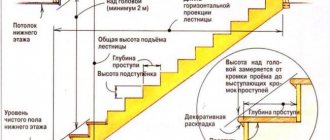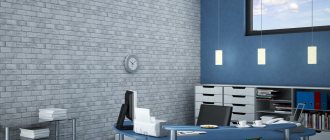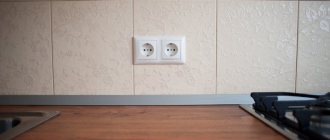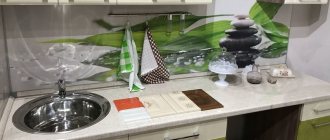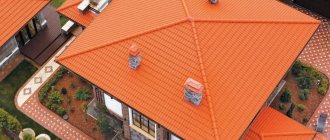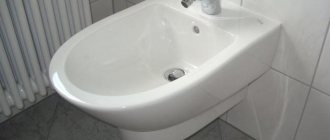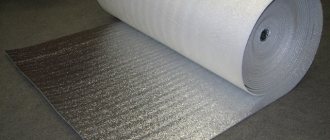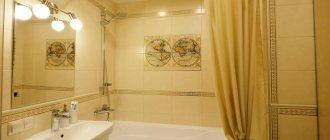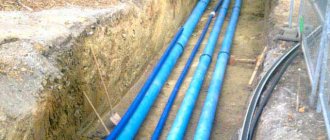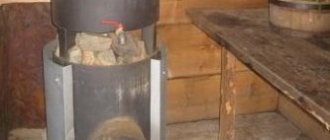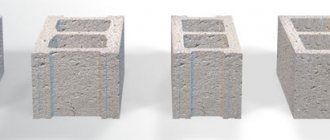A comfortable microclimate in the house has always been the merit primarily of the insulating materials used. We are talking about insulation, sound insulation, films, protective membranes and additional accessories. All this is designed to keep the living quarters warm, protect from rain outside and water vapor from the inside.
And every year, leading companies work to improve the protective properties of their products and make it easier to work with during the installation process. And the most famous products on the Russian market of insulating materials are Izospan. Let's look at its advantages and types, as well as what the letters A, B, C, D and F mean in the marking of rolls. The main thing is not to get confused!
A little about the manufacturer: why does everyone know about it?
Gexa company is one of the largest manufacturers of nonwoven materials for building insulation. The company itself is relatively young, operating since 1998 and began as a small family company. Today, Gex already employs more than 2,000 employees, and even has its own representative offices in neighboring countries.
Thanks to the availability and thoughtfulness of its products, Hexa quickly captured a large part of the market for similar products, while also developing geosynthetics for road construction and a stable production of disposable clothing for medical workers. Today there are about 15 of its representative offices in Russia.
By the way, Izospan is one of the very first brands of insulation produced domestically. Among builders, all these films and membranes are so well known that they have already received a household name. True, today the company has to actively fight against mass counterfeiting of its films, which differ in quality for the worse and spoil the entire impression of the brand.
Also, Izospan films are well known among the population due to the fact that they are always available. This is a credit to Hex's logistics system. But sometimes you have to look for other brands all over the city; you’re probably familiar with this situation.
In addition, Izospan is constantly working to improve its product; for example, it recently released a three-layer moisture-windproofing membrane with an anti-condensation coating. Another interesting new product is heat-saving insulation based on kraft paper with lamination with metallized lavsan, which we will talk about later.
Quality and range: everything to protect your home
In total, the Izospan line of insulating products has an assortment that is conventionally divided into 4 groups:
- windproof waterproofing vapor-permeable membranes;
- waterproof vapor barrier films;
- universal materials that work in several directions at once;
- heat-steam-waterproofing materials with additional energy-saving effects.
Here is an explanatory illustration of how exactly all these materials differ:
A roofing pie with films from Izospan looks like this:
Series A are windproof materials, and series B, C and D are hydro-vapor barrier membranes. If you are afraid of getting confused in abbreviations, remember a simple rule: the first letter means the insulation class, and the second means the modification.
If there is no second letter, then the material is classic, without additional frills:
Plus Izospan produces a special tape designed specifically for this product:
This manufacturer also produces special waterproofing materials for flat inversion roofs. The company itself always boasts that it creates all its products in automated production facilities.
And this is evidence that technical control is constantly being exercised over the quality of products. This cannot be achieved with any kind of handicraft production.
General installation rules
In order for the material to function as expected, it is important to carefully study the instructions before starting to work with it. Otherwise, it is easy to make mistakes during installation and, thus, Izospan B will be of no use, and the owner of the house will think that he has thrown money away.
In order for the material to work as expected, the following rules must be observed during operation:
- The material must be fastened from top to bottom when working on inclined or vertical structures;
- individual sheets of material are attached with an overlap of at least 15 cm;
- the joints between the canvases must be glued with special tape;
- Izospan B is laid in such a way that its fleecy side is turned towards the insulation;
- Izospan can be secured using small bars, a stapler, or clamping strips.
Izospan in floor vapor barrier
External protection of house structures from wind and rain: Izospan A
All films of group A protect insulation and roofing elements from the negative effects of the external environment, and all others protect both external and internal at the same time.
Here we are talking about a wind-moisture-proof membrane that protects the insulation from rain, snow and wind. At the same time, this membrane also removes condensation from the fleecy side. Such films are fixed to mineral wool or polystyrene foam from the outside.
As for newer modifications, Izospan AM and AQ are made of three-layer film, which makes it possible to increase the level of protection of buildings. Also in group “A” there are separate options that are resistant to high temperatures and fires.
Let's take a closer look at the tasks for which Izospan A films are used and what their technical characteristics and properties are:
Izospan AQ Proff
So, the waterproof hydro-windproof membrane Izospan AQ Proff is vapor-permeable and is designed to protect the insulation and roof structure from environmental influences. Namely, from moisture from rain.
Why vapor permeable? The fact is that such a membrane must remove water vapor from the insulation directly into the atmosphere. If it begins to interfere with these vapors, then moisture will begin to linger in the insulation itself and mold will develop.
But at the same time, on the other hand, waterproofing must have a certain water resistance. In a word, on one side it allows water to pass through, but on the other it does not. Izospan suggests using the professional three-layer superdiffusion membrane Izospan AQ Proff for these purposes:
By the way, all Izospan films marked Proff have special markings in the form of a grid with 10x10 cm cells. This is specially made for easy installation; dashed lines along the edges of the film indicate the overlap line. For example, vertical lines are applied in 1 meter increments, making the film easy to cut without first measuring with a tape measure.
Izospan AQ Proff is laid directly on the insulation, without leaving any special ventilation gaps, thereby saving on the installation of sheathing.
This membrane also has excellent light resistance, making it suitable for installation as a temporary roof. It is also highly durable, which allows installation in any weather, even in strong winds.
Izospan AM: protection against heat loss
Izospan AM is a vapor-permeable material that removes water vapor from the insulation directly into the ventilated gap. At the same time, it remarkably protects the thermal insulation from precipitation that accidentally gets under the roofing, as well as condensation:
The film of this brand has high resistance to mechanical loads. Additionally, it serves as a wind barrier, preventing air from passing through the thermal insulation. This, in turn, significantly reduces heat loss.
Izospan AS: as many as three layers
The Izospan AS membrane has two important functions: windproof and moisture-proof. It simultaneously protects both the thermal insulation layer and other roofing elements. To do this, the membrane has three internal layers, each of which was developed for its specific task.
Unlike other films, this membrane can be laid directly on thermal insulation, without a special gap for ventilation. To some extent, this simplifies and reduces the cost of the very design of the roofing pie.
It is also suitable as a component for insulating floors and facades, and lasts for 50 years (as the manufacturer claims):
But remember that the entire Izospan AS line is always installed only on the outer side of the insulation directly under the finishing roofing covering.
Membrane advantages
- rough base;
- wooden logs;
- thermal insulation layer;
- waterproofing;
- finishing floor;
- finishing coating.
You should not violate the technology for installing a wooden floor, because otherwise the structure will turn out to be unreliable. The entire pie should ideally rest on brick or concrete supports, with a small ventilated area between the soil and the wood floor. The vapor barrier should be installed immediately during the construction of the house; there is no need to postpone this stage “for later”.
Vapor barrier will reliably protect against moisture and condensation
Connecting tape (adhesive tape) Izospan FL
Laying Izospan B does not require any special skills or knowledge. Even a novice master can handle the material.
Step 1. The required amount of Izospan V material is purchased. It will be equal to the size of the floor area, to the value of which a certain amount of material required for the overlap is added. This is approximately 15-20% of the total area of Izospan V.
First you need to purchase suitable material
Step 2. A number of preparatory works are carried out in advance, as mentioned above. Next, insulation is laid between the joists.
Laying insulation between joists
Example of laying vapor barrier material
Step 4. To attach Izospan B, it is best to use a stapler. The material is targeted to the joists.
Fastening the material with a stapler
Step 5. The next piece of material is laid overlapping the previously laid and secured one. The overlap width is at least 15 cm.
The material is laid with an overlap
Step 6. Two Izospan B sheets in the overlap area are glued together using adhesive tape. This will allow you to achieve a certain tightness of the vapor barrier layer.
Adhesive tape is used to glue the canvases together
Step 7. It is recommended to additionally protect the lower part of the floor structure with a vapor and waterproofing layer of Izospan D material. It is also fastened using a construction stapler.
Izospan D
An example of using Izospan ML tape
The vapor barrier has been installed, now you can begin laying the final layer of the floor. As you can see, the installation of Izospan B is quite simple and does not require special skills, so you can carry it out yourself without calling specialists.
They need to be fastened differently. It is necessary to lay Izospan correctly: the film should be laid with a smooth surface against the thermal insulation, and the fibrous side of the roll remains outside. It will retain moisture generated from steam to prevent it from penetrating into the structure.
It is recommended to lay the vapor barrier with overlapping strips of 15-20 cm. The joints need to be firmly sealed. For this purpose, special adhesive tape with markings or Izospan tape are used. The area of contact between the sheets, counter slats, air gap and sheathing slats is sealed with a sealing strip. Its self-adhesive side is pressed simultaneously against Izospan and the adjacent surface.
Tape material is used in the area of joining niches, holes, windows, and in the construction of communications:
- water pipes;
- ventilation;
- sewerage
Izospan tape is also used in finishing joints with wooden and concrete structural elements. The installation scheme will largely depend on the element of the structure.
Vapor barrier is often used for external walls. If you need to cover the facade of a building, the strips are installed indoors, and the rough part of the roll will be adjacent to the thermal insulation.
Izospan is designed to protect insulating materials during the construction of industrial and residential buildings of any height.
It is able to protect polystyrene, mineral wool, and polyurethane foam from moisture.
Among the advantages are:
- reliability and strength;
- versatility and easy installation;
- environmental friendliness;
- resistance to elevated temperatures.
Line of vapor barrier materials: Izospan B
Izospan B is a vapor barrier with universal properties, suitable for any task and any room (except perhaps for saunas, they have their own line). This film perfectly protects walls from water vapor and can withstand temperatures from -60 to +80 degrees. One of its sides is rough, designed to hold condensation and slowly evaporate it.
It is made from polypropylene non-woven fabric and another additional polypropylene film. These two materials are securely glued together and never delaminate.
By the way, it is with this type of film that most questions arise about which side to mount Izospan on: rough or smooth? Indeed, there is a difference. But you can easily find the right side by touch, don't worry.
Additionally, this film prevents the penetration of small volatile insulation fibers directly into wall or roof structures. This is extremely important, especially if mineral wool insulation was used. In simple terms, in order not to breathe “prickly” air in a cozy attic:
Working with this material is not difficult, because... With Izospan B films there are always detailed instructions for use and calculation of the material.
But the slightly improved Izospan B Fix has special adhesive tapes directly on the film.
Preparation for installation of a water vapor barrier layer
Laying a vapor barrier involves carrying out a number of preparatory works. First, you need to select materials for all layers, as they say, and also decide which vapor barrier is best for the floor. This “pie” consists of the following stages (starting from the top):
- Decorative floor covering.
- Plank floor.
- Vapor barrier.
- Counterrail.
- Thermal insulator (between the counter-batten boards).
- Water protection.
- Base floor.
We invite you to familiarize yourself with Insulation of floors in a bathhouse - All about the bathhouse
Preparation begins with the base floor itself. All boards, wooden blocks and other parts made of wood should be treated with a special disinfectant composition that prevents rotting, the formation of fungus, and also protects against insect attacks.
If we are talking about repairing the floor, and not about building a new building, then the finished floor boards, floor covering and existing vapor barrier on the floor must be removed in advance. All debris must be removed and then the wooden structure should be treated with an antiseptic.
Two sides of one film: Izospan S
Izospan S is another type of hydro-vapor barrier. It differs from simple films primarily in that it also has a double structure - smooth on the inside and rough on the outside.
This film is also denser and more durable, and therefore suitable not only as a vapor barrier, but even as additional insulation. And its rough part is attached inside the building.
It is recommended to fix such a vapor barrier to the roof using galvanized nails:
Izospan C is also often used as a waterproofing agent during the installation of cement floor screeds in rooms with high air humidity.
Application area
- Manufacturers offer a wide range of materials. All types of Izospan differ in density, as a result of which they can be either laid on the floor of a frame house or used in a roof structure.
- Izospan is one of the most popular types of insulation due to its price and unique properties. It is suitable for walls, ceilings, basement floors, attics and lofts. Hydrophobic fabric is widely used as a waterproofing layer on ground floors, cement screeds in wet areas and as a wind barrier. Vapor barrier is one of the main advantages of the material.
- The moisture-proof membrane can be used in the construction of a heated floor. The windproof function has significantly expanded the range of application of the material. Depending on the operating conditions, it may be necessary to create a ventilation gap of 40–50 mm, due to which moisture is evaporated. A special feature of the fabric is its ability to reflect thermal radiation.
- The rolled material is not afraid of water, is durable and easy to install, and is easy to use in the attic. Widely used as a roofing vapor barrier for pitched roofs and partitions. At the preliminary stage of roof construction, the plates are installed between the rafters. The second layer of film overlaps the top one by 15–20 cm without tension.
The Izospan operating instructions indicate the basic requirements for the use of the material.
- It is advisable to avoid the strips adhering to the edge of the ridge.
- A ventilation gap (50 mm) must be created, which provides an air flow that promotes the weathering of moisture.
- All connections are treated with sealing tape.
Izospan marked AF is distinguished by the presence of ignition protection, so it is used in flammable areas. The presence of the letters AM means a three-layer film construction that can protect the building structure from any external influence.
For non-insulated roofs: Izospan D
The next type is Izospan D. These are materials based on polypropylene fiber, even more durable and reliable. They are even allowed to be used as shelter for up to four months. But, first of all, Izospan D serves as a vapor barrier for wooden roofs and cold walls. Sometimes it is also used as a layer for cement screed, like Izospan S. This is what this insulation looks like on the spread:
Let's make a short digression that will explain to you why all these details are so important, and why there are so many types of all these films, although it was possible to release one universal one. The quality of the vapor barrier directly affects the service life of both the roof and the house itself. That is why experts always advise giving preference to materials only from a well-known manufacturer who is concerned about its reputation.
After all, even with high-quality material it is usually difficult to create an absolutely sealed insulating layer, let alone thin and short-lived films. And during its operation, the insulation, if it begins to accumulate moisture, will quickly lose all its properties, thereby nullifying all efforts to construct the walls and roof.
Just imagine for a moment that you spent a lot of time and money on building a house, and within six months you began to notice the smell of mold. This is very very bad.
Another common problem is the leakage of the vapor barrier layer at the joints. Namely, poorly glued sheets. To solve precisely this problem, the Hexa company began to produce new products in 2022 - Izospan B Fix and Izospan D Fix.
Their difference from previous products is that there is already special adhesive hair pre-applied to the canvas. They not only facilitate the installation process itself, but also truly ensure reliable fastening of the canvases to each other.
When working with such material, you no longer need to worry that the construction tape will touch this particular area, pull and tear off a piece, or lie unevenly, or simply turn out to be of poor quality and easily peel off.
By the way, the D line also has a subtype - DM, films with a special anti-condensation coating that perfectly retains random droplets of moisture:
The purpose of vapor barrier work
Wooden structures are very susceptible to moisture. This can cause the wood to swell and warp. The floor is an area that can come into contact with moisture on both sides. Soil moisture, as well as the constantly changing microclimate of the room, negatively affects the floor of the building.
In kitchens and bathrooms, water can often spill on the floor, although the humidity in these rooms is always high. This two-way bombardment of moisture can very quickly destroy the foundation or lead to the appearance of mold or mildew in the house.
In view of this, it is advisable to hydro and vapor barrier the floor in a wooden house. Thanks to such building material as Izospan for flooring, it is possible to qualitatively protect wood from moisture and condensation.
